Abstract
Since April 1969, frame-mounted three-cusp fascia lata and pericardial valves have been used in over 200 patients for heart valve replacement. Six autologous fascia lata valves have been removed from the mitral position because of regurgitation produced by shrinkage of one or two cusps. To elucidate the cause and mechanism of graft failure the opening characteristics of fascia lata and Silastic valves were studied in a steady state flow rig.
In virtually all valves examined the cusps opened in sequence and the order in which the cusps of a particular valve opened was maintained irrespective of its position in the testing apparatus. Under the conditions prevailing in this experiment the sequential opening of the cusps seems to be inherent in the design of the valve. Inequalities in the size and shape of the cusps or in the physical properties of the material accentuated this phenomenon.
Fully open valves were geometrically similar and the relationship between pressure gradient, flow rate, and valve diameter has the form: pd4=4,600 Q2. This formula will apply to all such valves tested in water, irrespective of material or size, provided that they are fully open.
The experiment has shown that the pressure gradient across the valve increases rapidly as the diameter of the valve is reduced and that with reduction in valve diameter a decreased flow rate is required for complete valve opening.
It is postulated that in patients with postoperative low cardiac output, large grafts in the mitral position may not open fully and consequently the cusp or cusps with little or no mobility may undergo structural changes leading to fibrosis with thickening or atrophy.
Full text
PDF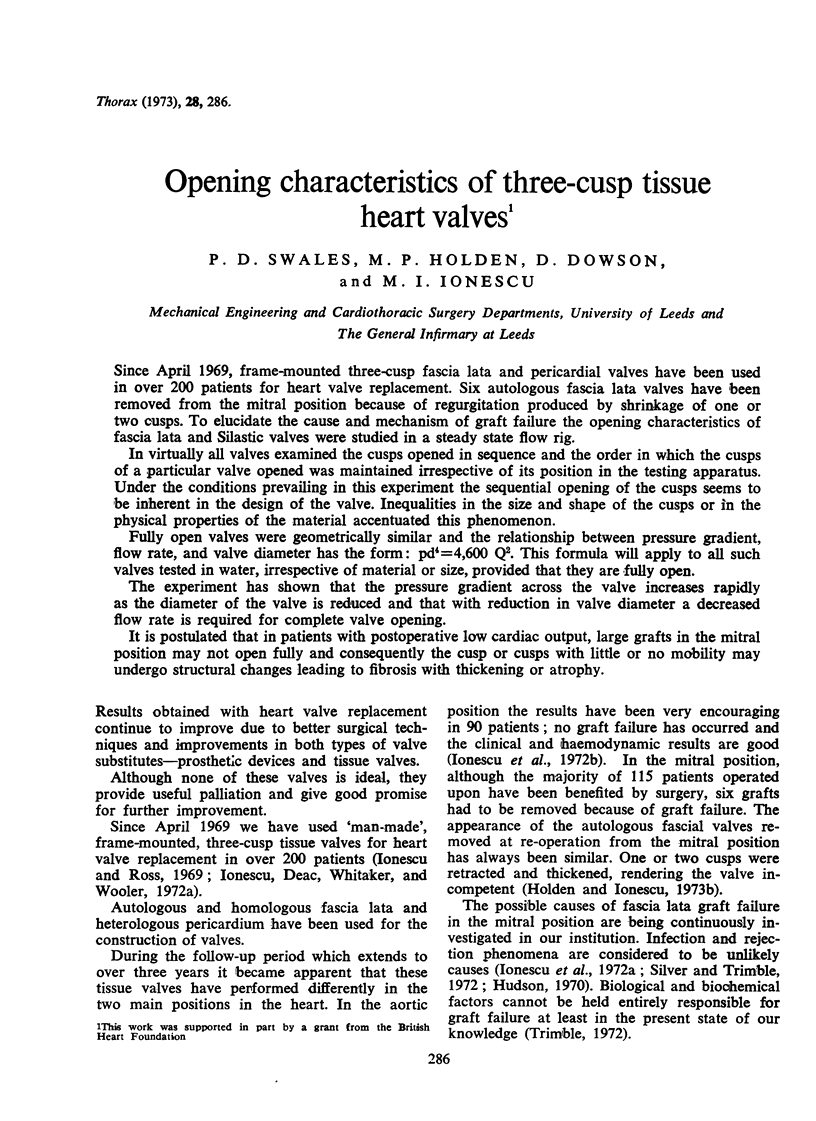
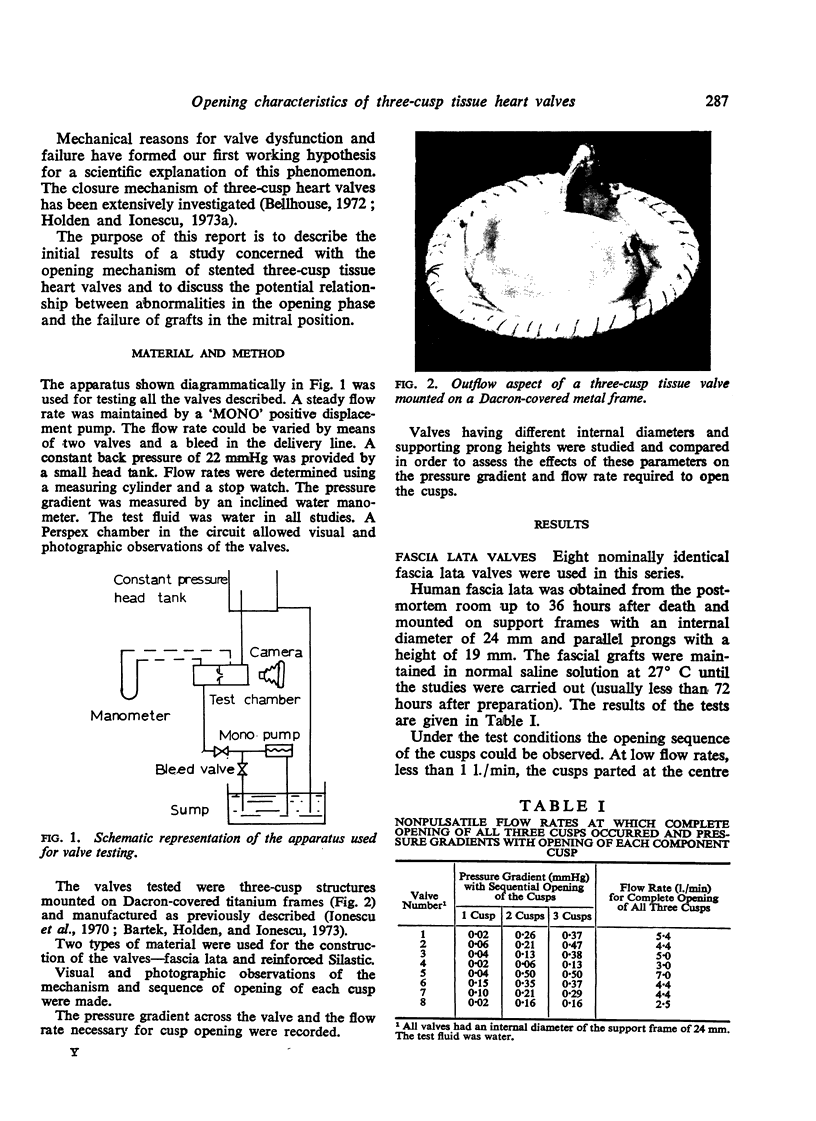
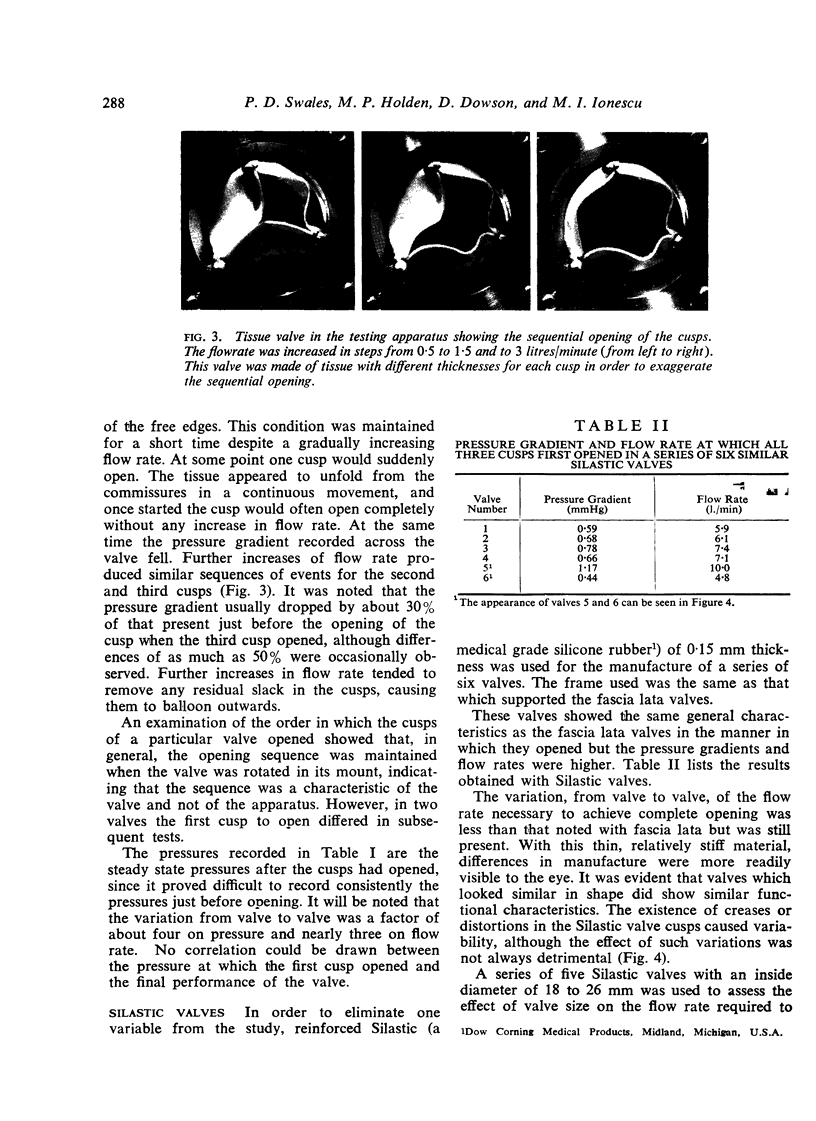
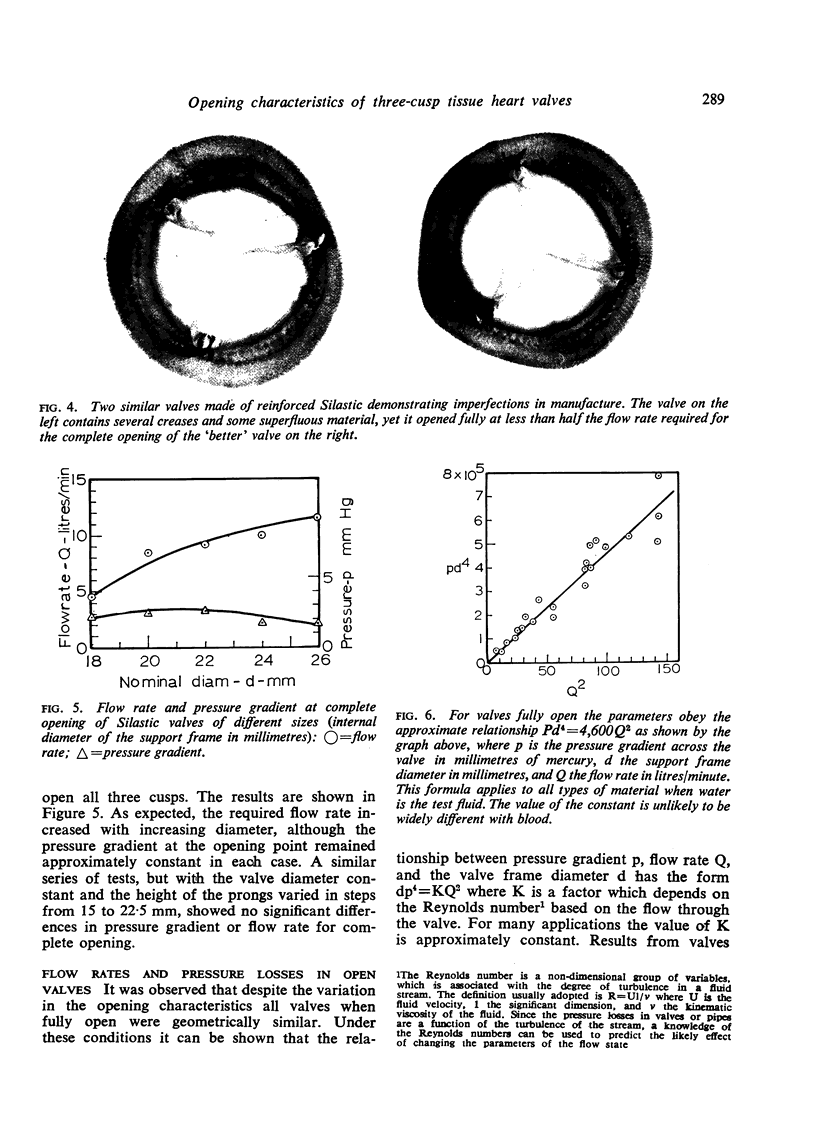
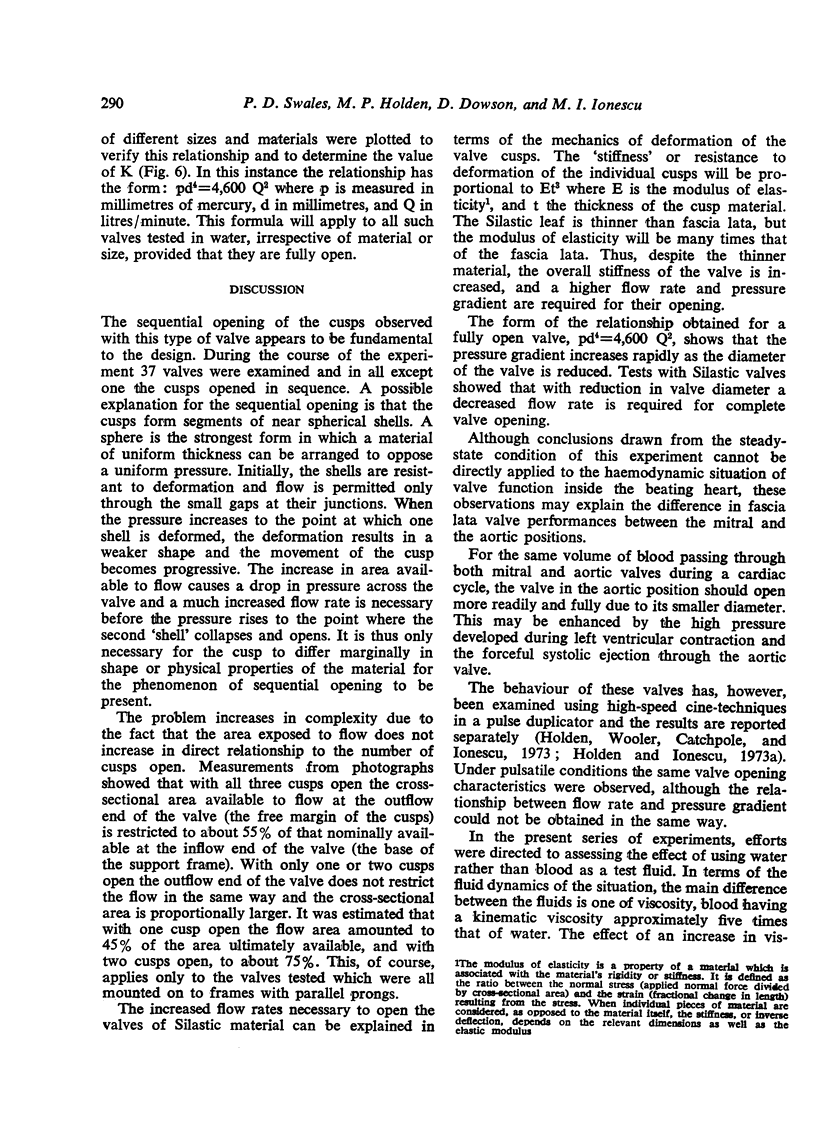
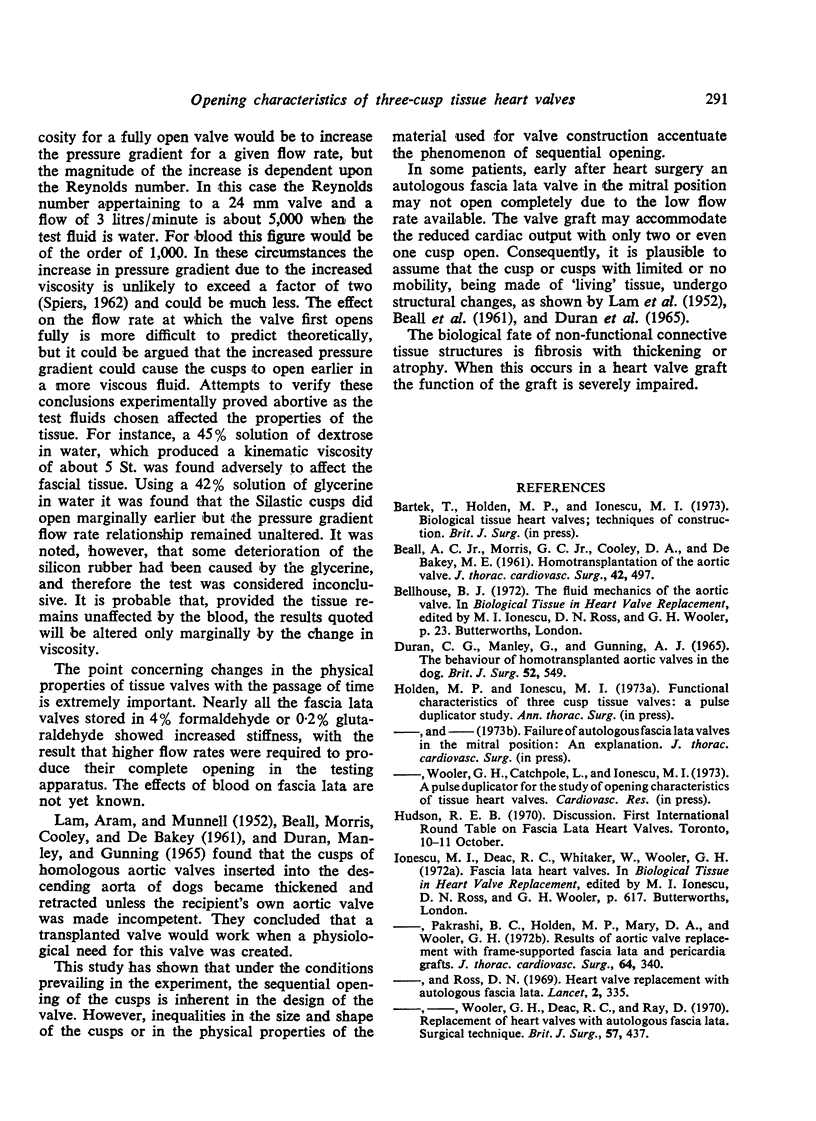
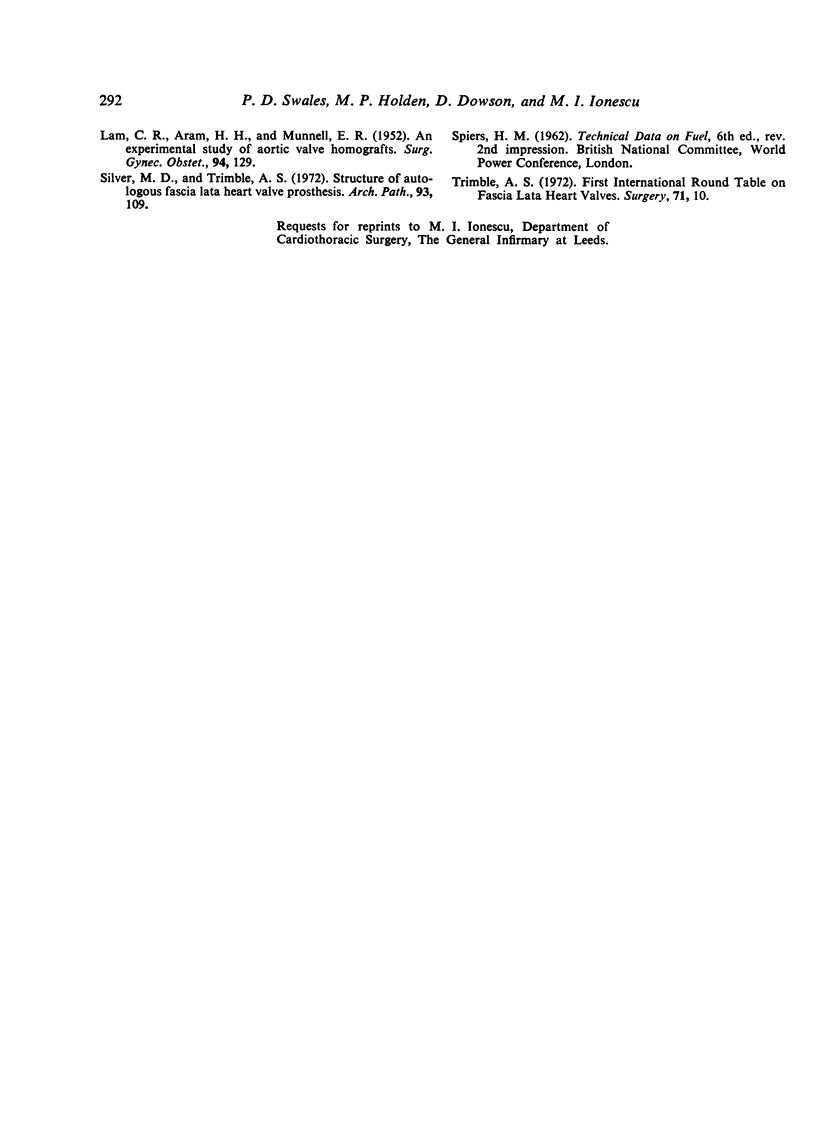
Images in this article
Selected References
These references are in PubMed. This may not be the complete list of references from this article.
- BEALL A. C., Jr, MORRIS G. C., Jr, COOLEY D. A., DE BAKEY E. Homotransplantation of the aortic valve. J Thorac Cardiovasc Surg. 1961 Oct;42:497–506. [PubMed] [Google Scholar]
- DURAN C. G., MANLEY G., GUNNING A. J. THE BEHAVIOUR OF HOMOTRANSPLANTED AORTIC VALVES IN THE DOG. Br J Surg. 1965 Jul;52:549–552. doi: 10.1002/bjs.1800520716. [DOI] [PubMed] [Google Scholar]
- Ionescu M. I., Pakrashi B. C., Holden M. P., Mary D. A., Wooler G. H. Results of aortic valve replacement with frame-supported fascia lata and pericardial grafts. J Thorac Cardiovasc Surg. 1972 Sep;64(3):340–353. [PubMed] [Google Scholar]
- Ionescu M. I., Ross D. N. Heart-valve replacement with autologous fascia lata. Lancet. 1969 Aug 16;2(7616):335–338. doi: 10.1016/s0140-6736(69)92696-8. [DOI] [PubMed] [Google Scholar]
- Ionescu M. I., Ross D. N., Wooler G. H., Deac R., Ray D. Replacement of heart valves with autologous fascia lata. Surgical technique. Br J Surg. 1970 Jun;57(6):437–442. doi: 10.1002/bjs.1800570609. [DOI] [PubMed] [Google Scholar]
- LAM C. R., ARAM H. H., MUNNELL E. R. An experimental study of aortic valve homografts. Surg Gynecol Obstet. 1952 Feb;94(2):129–135. [PubMed] [Google Scholar]
- Silver M. D., Trimble A. S. Structure of autologous fascia lata heart valve prostheses. Arch Pathol. 1972 Feb;93(2):109–115. [PubMed] [Google Scholar]





